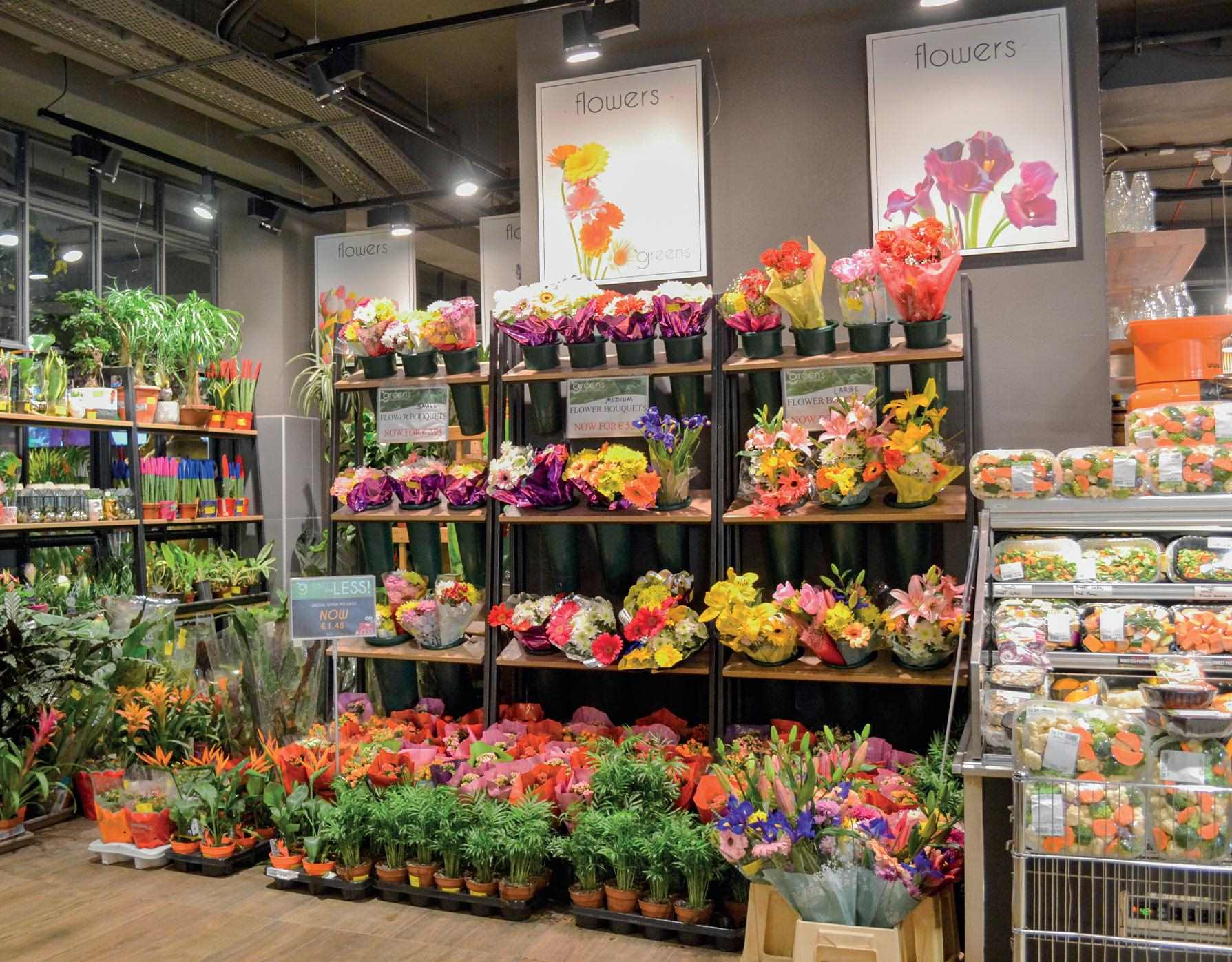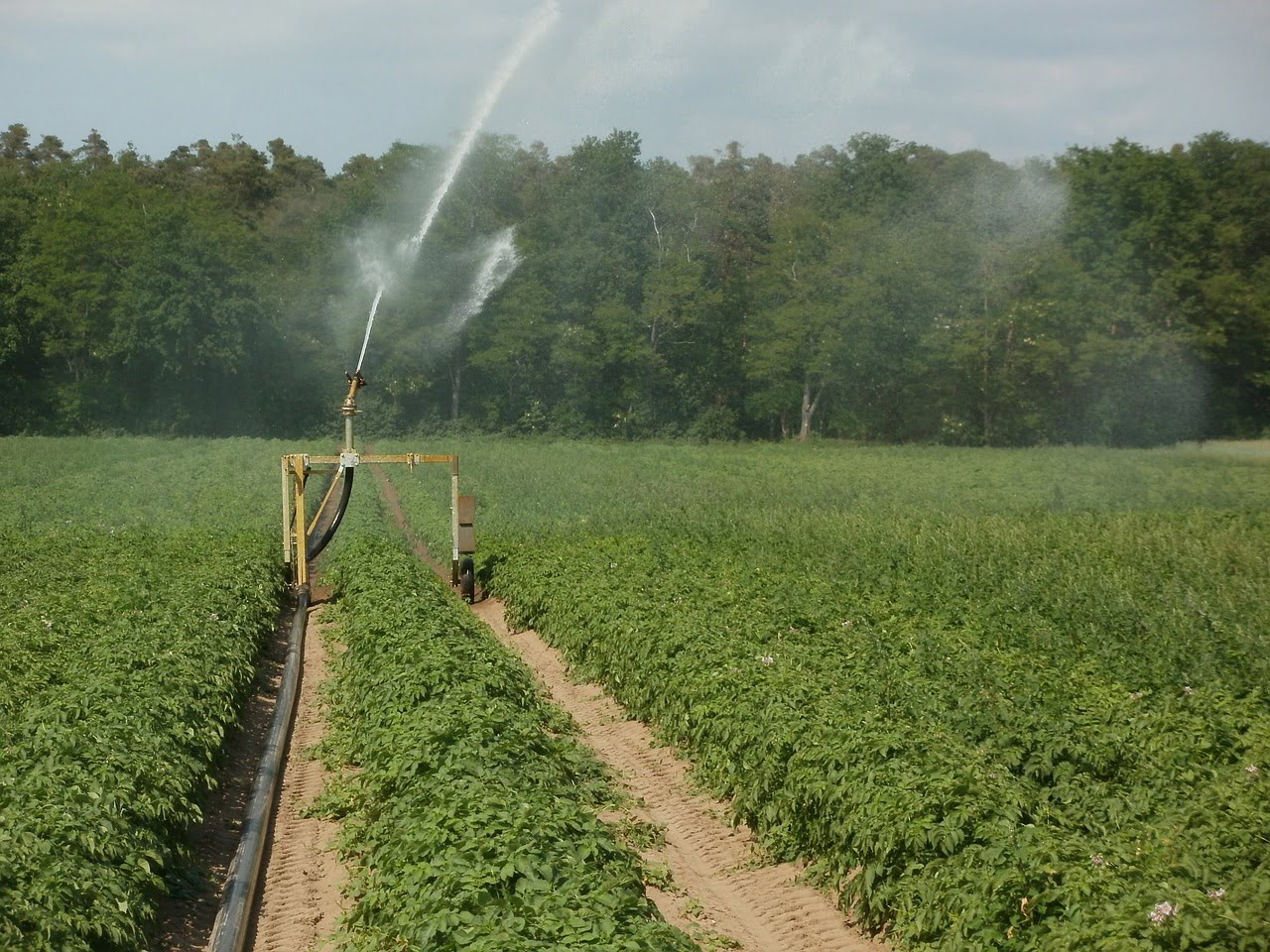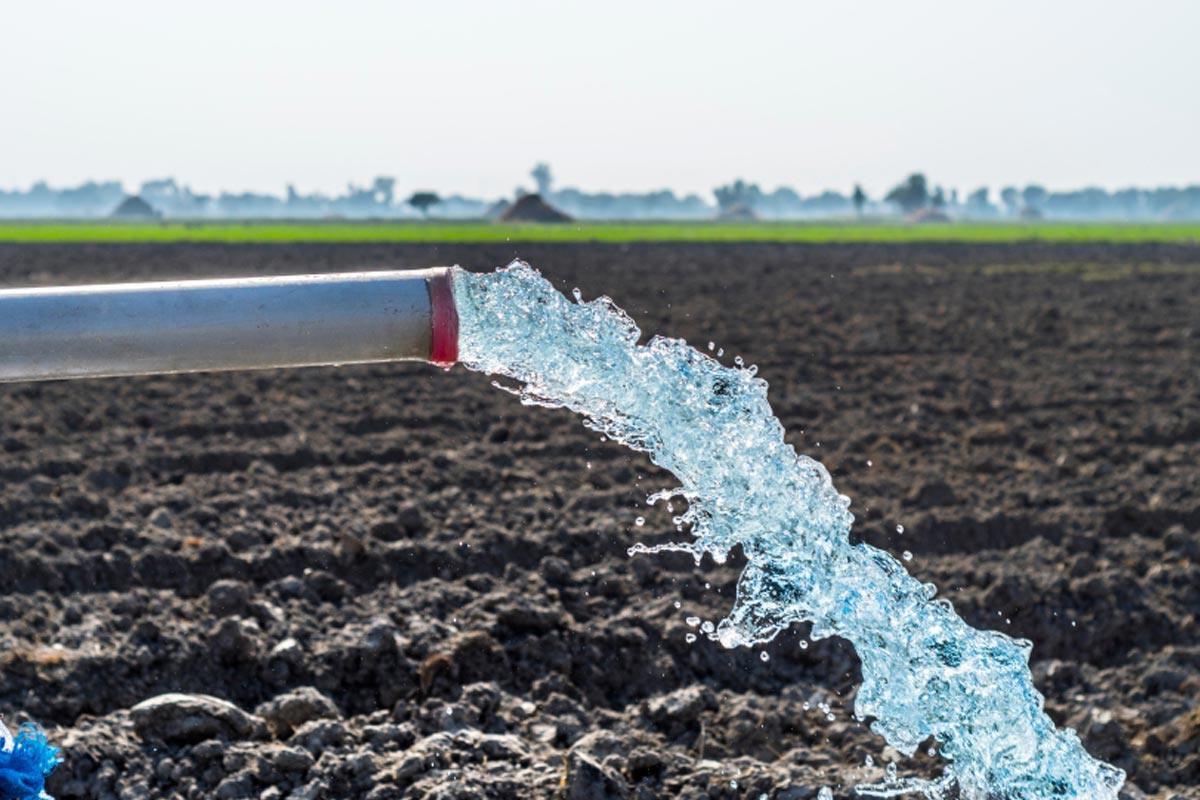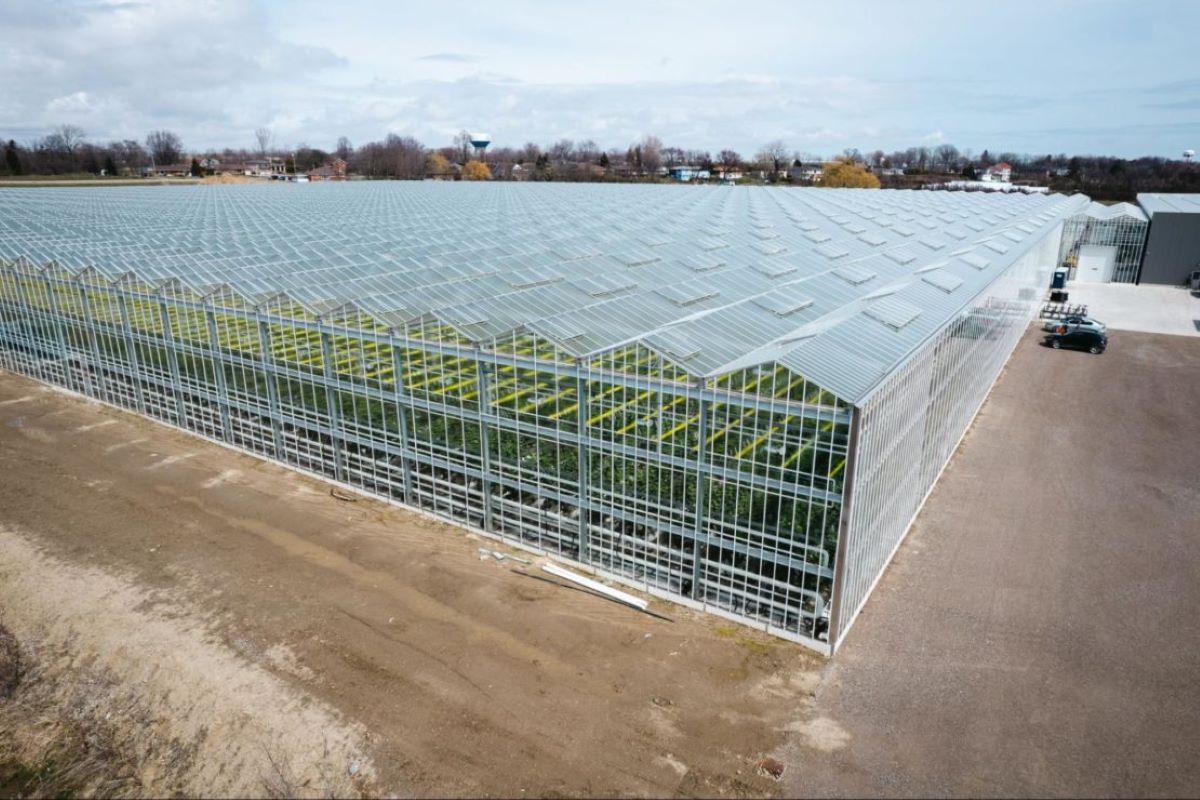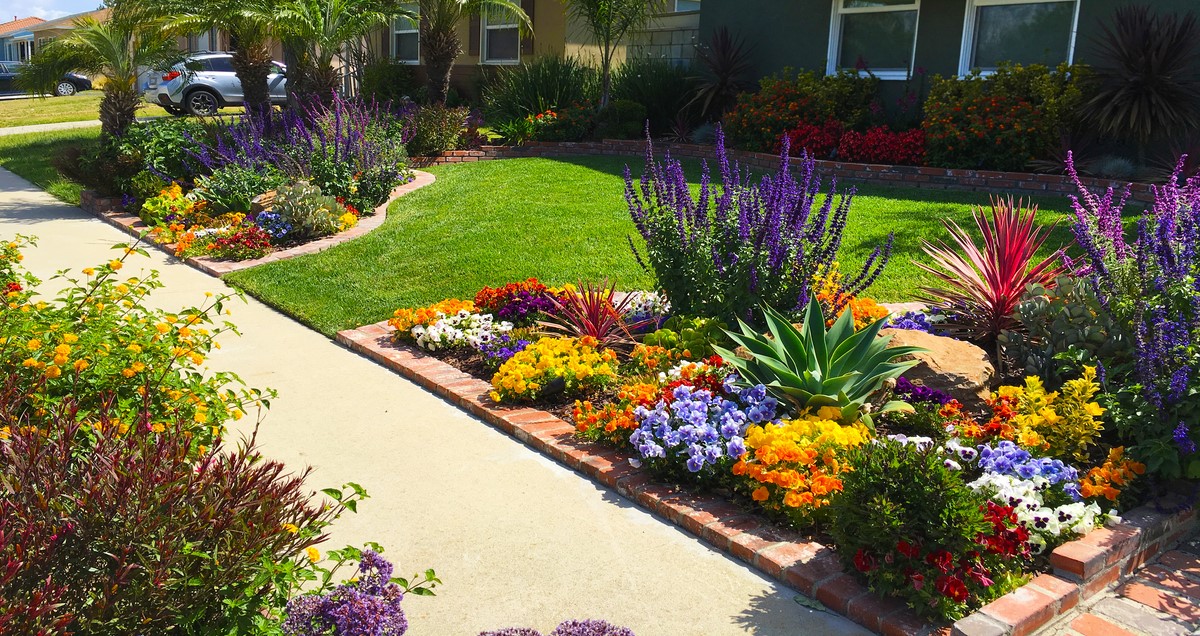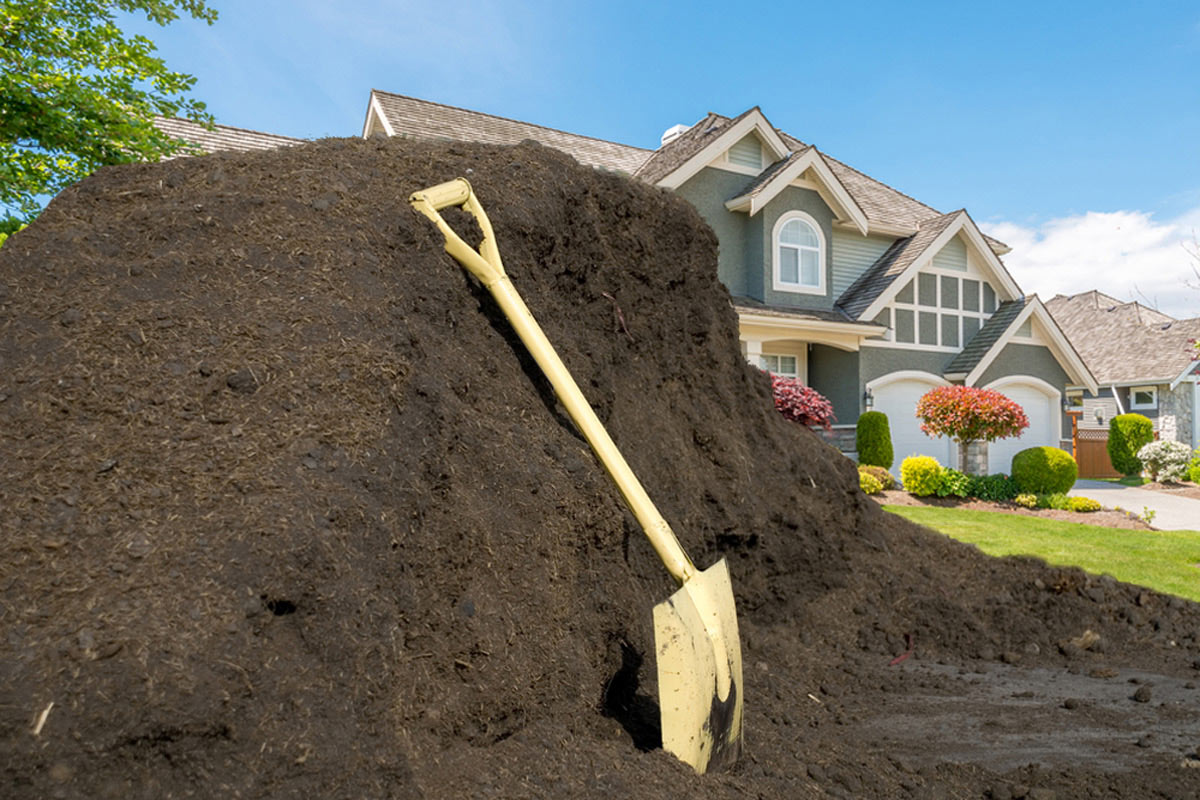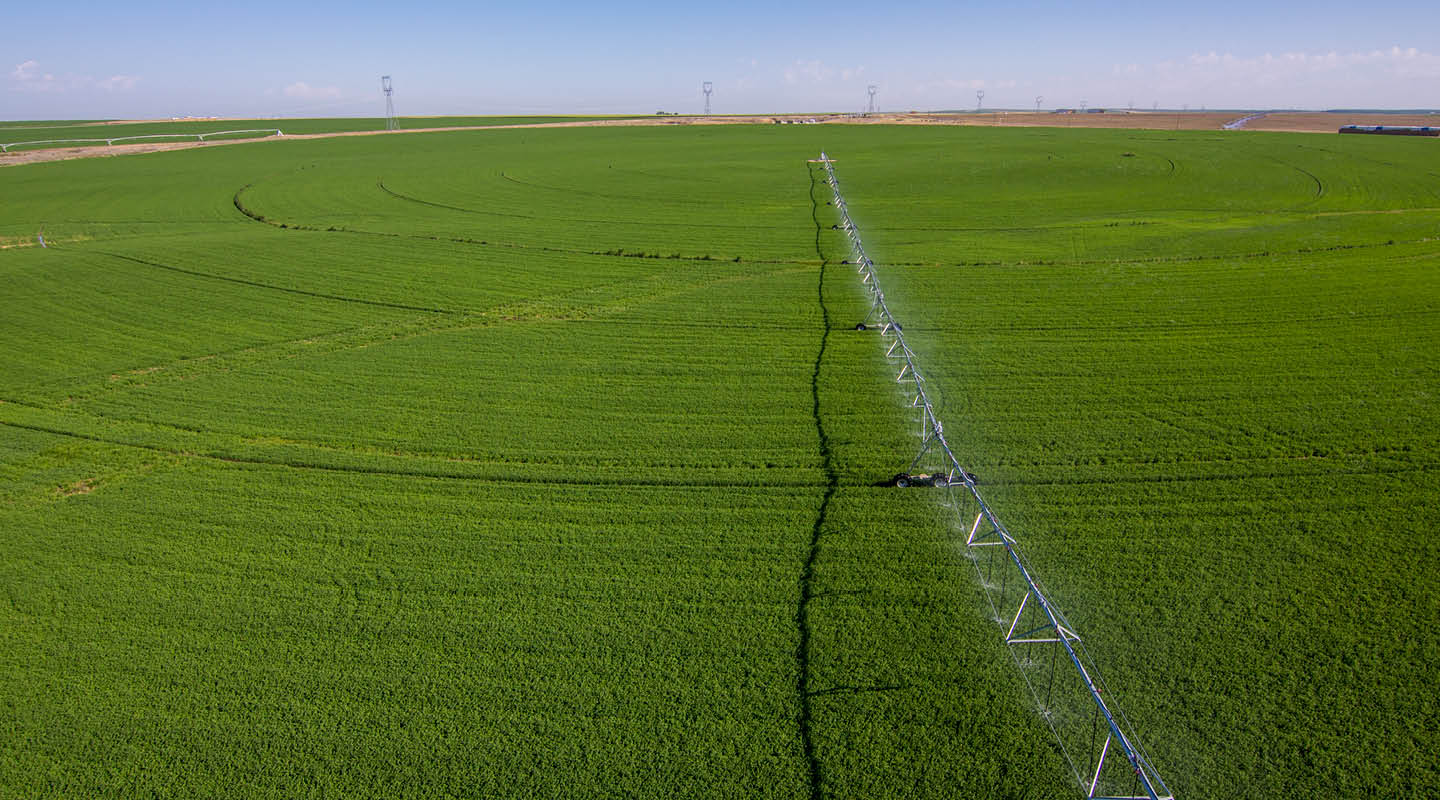Home>Gardening Tips and Tricks>Eco-Friendly Gardening>How Much Do Hydroponics Cost


Eco-Friendly Gardening
How Much Do Hydroponics Cost
Modified: January 22, 2024
Discover the cost of hydroponics for eco-friendly gardening. Learn about the expenses involved and find budget-friendly solutions for your indoor garden.
(Many of the links in this article redirect to a specific reviewed product. Your purchase of these products through affiliate links helps to generate commission for Chicagolandgardening.com, at no extra cost. Learn more)
Table of Contents
Introduction
Welcome to the world of eco-friendly gardening! In a time where environmental concerns are at the forefront of our minds, finding sustainable and responsible ways to grow our own food is becoming increasingly important. One such method that has gained popularity is hydroponic gardening.
Hydroponics is a soilless gardening technique that utilizes water-based nutrient solutions to grow plants. With hydroponics, you can cultivate a wide variety of plants, from leafy greens to herbs and even fruiting crops, all without the need for traditional soil. This method not only conserves water but also eliminates the use of harmful fertilizers and pesticides, making it a truly eco-friendly approach to gardening.
While the benefits of hydroponic gardening are clear, many aspiring gardeners are hesitant to dive in due to concerns about the cost. It’s true that setting up a hydroponic system can require some initial investment, but the long-term savings and environmental impact make it well worth considering.
In this article, we will explore the different components that contribute to the cost of hydroponic systems. We will discuss both the initial investment costs and the ongoing operational expenses involved in hydroponic gardening. By understanding these cost factors, you can make informed decisions about the best approach for your budget and gardening goals.
Additionally, we will analyze the costs associated with different types of hydroponic systems, such as nutrient film technique (NFT), deep water culture (DWC), and vertical gardens. We will highlight the advantages and disadvantages of each system, along with their respective cost implications.
Finally, we will provide you with some cost-saving tips and strategies for hydroponic gardening, allowing you to maximize efficiency and minimize expenses. Whether you are a beginner or an experienced gardener, these tips will help you make the most of your hydroponic setup without breaking the bank.
So, let’s dive into the world of eco-friendly gardening and explore how hydroponics can be a cost-effective and sustainable way to grow your own food, enhance your garden, and contribute to a greener world.
Basics of Hydroponics
Before we delve into the costs associated with hydroponic systems, let’s first understand the basics of this innovative gardening method. Hydroponics is a soilless growing technique that allows plants to thrive by delivering the necessary nutrients directly to their roots through a water-based solution.
In traditional soil-based gardening, plants obtain their nutrients from the soil, which acts as a medium to hold the nutrients. However, in hydroponics, this need for soil is eliminated by providing the plants with a carefully balanced nutrient solution that contains all the essential elements they require for healthy growth.
So, how does hydroponics work? Instead of relying on soil, plants are grown in an inert medium such as rockwool, perlite, coco coir, or clay pellets. These mediums offer support to the plants while allowing the nutrient solution to flow freely around the roots.
The nutrient solution is closely monitored and adjusted to ensure optimal pH levels and nutrient concentration. By providing plants with a controlled environment, hydroponics offers several advantages over traditional gardening, including faster growth rates, higher yields, and efficient use of resources.
One of the major benefits of hydroponics is the ability to grow plants in any season and in regions where traditional gardening may not be feasible. The controlled environment allows for year-round cultivation, ensuring a consistent supply of fresh produce regardless of external weather conditions.
Furthermore, hydroponics reduces the risk of soil-borne diseases and pests since there is no soil to harbor them. This eliminates the need for harmful pesticides and herbicides, making hydroponics a healthier and more environmentally friendly gardening method.
Hydroponics also conserves water compared to traditional gardening. The closed-loop system of hydroponics recirculates water, minimizing wastage and allowing for optimal water usage. This is especially beneficial in regions facing water scarcity and drought conditions.
Now that we have covered the basics of hydroponics, let’s explore the factors that influence the cost of setting up and maintaining a hydroponic system. By understanding these factors, you can make informed decisions about the best approach for your gardening needs and budget.
Factors Affecting Hydroponic Costs
When considering the costs associated with hydroponic gardening, it’s important to understand the various factors that can influence the overall expenses. By taking these factors into account, you can estimate the budget required for setting up and maintaining your hydroponic system.
1. Size of the System: The size of your hydroponic system, measured in terms of the number of plants or the square footage of the growing area, will have a direct impact on the cost. Larger systems will require more materials, such as tanks, pipes, and growing containers, resulting in higher upfront costs.
2. System Complexity: The complexity of your hydroponic system can also affect the cost. Simple systems, like the nutrient film technique (NFT) or deep water culture (DWC) systems, are generally more affordable compared to complex systems like aeroponics or vertical gardens. The more advanced the system, the higher the initial investment may be.
3. Equipment and Technology: The type and quality of equipment you choose for your hydroponic system play a significant role in the overall cost. High-quality grow lights, water pumps, air pumps, and climate control systems can be more expensive but may offer better efficiency and results in the long run.
4. Plant Selection: The types of plants you choose to grow in your hydroponic system can impact costs. Some plants require specific nutrient formulations or specialized growing equipment, which can add to the overall expenses. Additionally, plants with shorter maturation times may result in a higher turnover rate and increased operational costs.
5. Energy Consumption: Hydroponic systems often rely on artificial lighting, heating, and ventilation to create an ideal environment for plant growth. These energy-intensive components can contribute to operational costs over time. Opting for energy-efficient equipment and implementing smart energy-saving practices can help mitigate these costs.
6. Water Quality: The quality of water used in your hydroponic system can impact costs. If your water source is not suitable for hydroponic gardening, you may need to invest in water treatment systems or alternative water sources, which can increase expenses.
7. Maintenance and Supplies: Ongoing maintenance tasks, such as monitoring nutrient levels, pH balancing, and system cleaning, require supplies like nutrients, pH adjusters, and cleaning agents. These recurring costs should be considered when estimating the total cost of operating a hydroponic system.
By taking these factors into consideration, you can develop a more accurate budget for your hydroponic gardening endeavor. In the next sections, we will explore the specific cost components of hydroponic systems and provide practical tips for saving money while maintaining a productive and eco-friendly garden.
Cost Components of Hydroponic Systems
When evaluating the costs involved in setting up and maintaining a hydroponic system, it is important to consider the various components that contribute to the overall expenses. By understanding these cost components, you can better plan your budget and ensure a successful and cost-effective hydroponic garden.
1. Structural Components: The structural components of a hydroponic system include items like grow beds, trays, reservoirs, and supporting structures. These components provide the foundation for your plants and can vary in cost depending on the size and material used. For example, commercially available grow beds made of high-quality materials may be more expensive compared to DIY solutions made from inexpensive alternatives such as food-grade plastic containers or PVC pipes.
2. Growing Medium: The growing medium is the material that supports the plants and allows the nutrient solution to reach the roots. Commonly used growing mediums include rockwool, perlite, coconut coir, and clay pellets. The cost of the growing medium will depend on the type and quantity needed for your specific hydroponic system.
3. Nutrient Solution: The nutrient solution is a vital component of hydroponics, providing the necessary nutrients for plant growth. The cost of the nutrient solution will depend on factors such as the type of plants being grown, the volume of the solution required, and the frequency of nutrient replenishment. Pre-mixed nutrient solutions are available commercially, but you can also choose to mix your own, which could potentially save costs in the long run.
4. Lighting: Since hydroponic systems are often grown indoors or in controlled environments, artificial lighting is necessary to provide the right amount and spectrum of light for plant growth. The cost of lighting will depend on factors such as the size of the growing area, the type of lighting (LED, fluorescent, or HID), and the energy efficiency of the light fixtures.
5. Water and Nutrient Management: Hydroponic systems require a method of delivering water and nutrients to the plants. This can include items such as water pumps, irrigation systems, nutrient dosing equipment, and pH monitoring and adjustment tools. The cost of water and nutrient management components will vary depending on the complexity and scale of your hydroponic setup.
6. Climate Control: Creating and maintaining the ideal climate for plant growth in a hydroponic system often requires temperature and humidity control. This can involve equipment such as heaters, air conditioners, ventilation systems, and humidity controllers. The cost of climate control will depend on factors such as the size of the environment and the specific requirements of the plants being grown.
7. Operational Supplies: There are various operational supplies that contribute to the overall cost of a hydroponic system. This includes items such as pH testing kits, nutrient additives, cleaning supplies, and pest control products. The cost of these supplies will depend on the size of your system, the frequency of maintenance tasks, and the specific needs of your plants.
By understanding the cost components of a hydroponic system, you can make informed decisions about where to allocate your budget and identify areas where cost-saving measures can be implemented. In the next section, we will dive deeper into the initial investment costs involved in setting up a hydroponic system.
Initial Investment Costs
When starting a hydroponic garden, there are several initial investment costs to consider. These costs are primarily related to acquiring the necessary equipment and materials to set up your hydroponic system. While the upfront costs may seem daunting, it is important to remember that hydroponics offers long-term benefits that can outweigh the initial expenses.
1. System Components: The cost of the structural components of your hydroponic system can vary depending on the size and complexity of your setup. This includes items like grow beds, trays, reservoirs, pipes, and supporting structures. If you are opting for commercially available kits, the cost will depend on the brand and the quality of the materials used. For those who prefer DIY solutions, the costs can be reduced by using readily available and cost-effective alternatives.
2. Growing Medium and Nutrient Solution: The cost of the growing medium, such as rockwool, perlite, or coco coir, will depend on the type and quantity needed for your hydroponic system. Additionally, the nutrient solution can be purchased commercially or mixed on your own. The cost of the nutrient solution will depend on factors such as the type of plants being grown, the volume of the solution required, and the frequency of nutrient replenishment.
3. Lighting: Artificial lighting is crucial for indoor or controlled environment hydroponic systems. LED lights are commonly used due to their energy efficiency and the ability to provide the full spectrum of light required for plant growth. The cost of lighting will depend on factors such as the size of the growing area, the number and wattage of the lights used, and the specific requirements of your plants.
4. Water and Nutrient Management: The cost of water and nutrient management components, such as water pumps, irrigation systems, nutrient dosing equipment, and pH monitoring tools, will depend on the scale and complexity of your hydroponic system. Basic systems can be more affordable, while advanced setups with automated controls can be more expensive. It is important to choose components that meet your specific needs and budget.
5. Climate Control: Creating and maintaining the optimal climate for your hydroponic garden may require equipment such as heaters, air conditioners, ventilation systems, and humidity controllers. The cost of climate control will depend on factors such as the size of the environment and the specific requirements of the plants being grown. Energy-efficient options and proper insulation can help manage costs in the long run.
Keep in mind that the initial investment costs can vary greatly depending on the size and complexity of your hydroponic system. Factors such as the quality of materials, brand choices, and whether you opt for DIY solutions will also impact the overall expenses. Taking the time to research and carefully plan your hydroponic setup can help you make informed decisions and manage your initial investment effectively.
Now that we have covered the initial investment costs, let’s explore the ongoing operational costs involved in maintaining a hydroponic system in the next section.
Ongoing Operational Costs
Once your hydroponic system is up and running, there are ongoing operational costs that you need to consider. These costs are associated with the day-to-day maintenance and upkeep of your hydroponic garden. While they may vary depending on the size and complexity of your system, understanding these ongoing expenses will help you manage your budget effectively.
1. Electricity: Since hydroponic systems often rely on artificial lighting, heating, and ventilation, electricity consumption is a significant ongoing cost. The energy requirements will depend on factors such as the size of the growing area, the type of lighting used, and the environmental conditions you need to maintain. Opting for energy-efficient equipment, utilizing natural light whenever possible, and implementing smart energy-saving practices can help reduce electricity costs.
2. Nutrient Solution: As plants grow and consume nutrients, regular replenishment of the nutrient solution is necessary. The frequency and volume of solution changes depend on factors such as plant growth rates, nutrient uptake, and system size. The cost of the nutrient solution will depend on whether you purchase pre-mixed solutions or mix your own using various hydroponic nutrient formulations.
3. Water: Hydroponic systems generally use less water compared to traditional gardening methods. However, water costs can still be a contributing factor in your operational expenses. The amount of water used will vary depending on factors such as the size of the system, evaporation rates, and the environmental conditions. Utilizing efficient irrigation systems, collecting and reusing water when possible, and optimizing water-saving techniques can help minimize water costs.
4. Operational Supplies: Various supplies are needed to maintain your hydroponic system. This includes pH testing kits, nutrient additives, cleaning agents, and pest control products. The frequency and quantity of these supplies will depend on factors such as the size of your system, the plant’s nutritional requirements, and any specific maintenance needs. By monitoring and planning your supply usage efficiently, you can minimize unnecessary expenses.
5. Replacement and Upgrades: Over time, certain components of your hydroponic system may need to be replaced or upgraded. This can include things like grow lights, pumps, pH sensors, and other equipment that wear out or become outdated. Planning for these periodic replacements and upgrades, as well as researching the best options within your budget, will help you manage these costs more effectively in the long run.
It’s important to regularly assess and optimize your hydroponic system to ensure efficiency and productivity while minimizing ongoing costs. Regular maintenance, monitoring nutrient levels, adjusting pH, and promptly addressing any issues that arise will help you avoid costly problems and maximize the lifespan of your equipment.
Now that we have explored the ongoing operational costs of hydroponic gardening, let’s move on to analyze the cost differences between various hydroponic systems in the coming sections.
Cost Analysis of Different Hydroponic Systems
There are various types of hydroponic systems available, each with its own advantages and cost implications. Understanding the cost differences between these systems can help you make informed decisions about the best approach for your gardening needs and budget.
1. Nutrient Film Technique (NFT): NFT systems are popular for their simplicity and low initial investment costs. They involve a shallow, sloping channel where a thin film of nutrient solution continuously flows over the plant roots. NFT systems require less growing medium and fewer nutrients compared to other systems, resulting in lower ongoing operational costs. However, they may require more frequent monitoring and maintenance due to the reliance on proper nutrient flow and root oxygenation.
2. Deep Water Culture (DWC): DWC systems are another cost-effective option for hydroponic gardening. They involve suspending plant roots in a nutrient solution with the support of a floating platform. DWC systems are relatively simple to set up and require minimal equipment. They offer good oxygenation to the roots but may require regular monitoring of nutrient levels and maintaining proper pH balance. Overall, DWC systems are affordable and suitable for novice hydroponic gardeners.
3. Aeroponics: Aeroponic systems provide a highly efficient method of nutrient delivery by misting the plant roots with a nutrient solution. While aeroponic systems can produce impressive results in terms of plant growth and productivity, they typically come with higher initial investment costs. This is due to the need for specialized misting equipment, pumps, and timers. However, the savings in water usage can compensate for the initial investment in the long run.
4. Vertical Gardens: Vertical gardens are perfect for those with limited space. These systems utilize vertical stacking of growing units to maximize space efficiency. While vertical gardens offer the advantage of growing more plants in a smaller footprint, they may require additional lighting and irrigation systems to ensure adequate light penetration and water distribution. The costs of these additional components should be factored into the overall budget.
5. Drip Systems: Drip systems are popular for their versatility and ease of use. They involve delivering nutrient solution directly to the roots using a network of tubes and drippers. Drip systems can be adapted to various growing setups and are suitable for a wide range of plant types. The initial investment costs for drip systems are moderate, and ongoing operational costs can be managed effectively by controlling the water and nutrient flow.
It’s important to note that the cost analysis of different hydroponic systems is not only about the initial investment or equipment costs. Factors such as ongoing operational expenses, ease of maintenance, and scalability should also be considered when determining the most cost-effective system for your specific needs.
By carefully considering the cost implications of different hydroponic systems, you can make a well-informed decision about which method aligns with your budget while meeting your gardening goals. In the next section, we will discuss some practical cost-saving tips for hydroponic gardening.
Cost-saving Tips for Hydroponic Gardening
Hydroponic gardening can provide a sustainable and cost-effective way to grow your own food. While there are initial investment costs involved, there are also various strategies you can implement to save money and maximize the efficiency of your hydroponic system. Here are some cost-saving tips to consider:
1. DIY Solutions: Consider using do-it-yourself (DIY) solutions for certain components of your hydroponic system. For example, you can repurpose household items for growing containers or create your own vertical gardening setup using recycled materials. This can significantly reduce the initial investment costs of setting up your hydroponic garden.
2. Grow from Seeds: Starting your plants from seeds rather than buying seedlings can be a cost-effective approach. Seeds are generally more affordable, and you’ll have a wider variety of plants to choose from. Additionally, growing from seeds allows you to control the entire growth cycle of your plants, resulting in better quality produce.
3. Reuse and Recycle: Look for opportunities to reuse and recycle materials in your hydroponic system. For example, you can reuse nutrient solution by filtering and replenishing it with appropriate nutrients. Additionally, recycling materials for your growing containers, trays, or supporting structures can help reduce costs while minimizing waste.
4. Energy-efficient Lighting: LED grow lights are energy-efficient and have a longer lifespan compared to traditional lighting options. While they may have a higher upfront cost, LED lights consume less energy and produce less heat, resulting in savings on electricity bills in the long run. Consider investing in high-quality LED grow lights to maximize energy efficiency.
5. Water Conservation: Implement water-saving techniques to minimize water usage in your hydroponic system. Use timers to control watering schedules and consider employing water-recirculating systems or collecting rainwater for irrigation. Avoid overwatering your plants, as excess water can lead to nutrient loss and potentially increase operational costs.
6. Monitor and Adjust Nutrient Levels: Regularly monitor the nutrient levels and pH of your hydroponic system to ensure optimal plant health. By maintaining proper nutrient balance and adjusting pH as needed, you can avoid nutrient wastage and improve plant growth and productivity. This will help you save money by avoiding unnecessary nutrient solution replacements.
7. Pest Prevention and Management: Implement proactive pest prevention strategies to minimize the need for costly pesticides. This can include practicing good hygiene, using beneficial insects for natural pest control, and regularly inspecting your plants for any signs of pests or diseases. Early detection and prevention can save you money on expensive treatments and protect the health of your plants.
8. Continuous Learning and Improvement: Stay informed about the latest advancements and techniques in hydroponic gardening. Continuously educating yourself about cost-saving practices, efficient systems, and new technologies can help optimize your hydroponic setup over time. Networking with other hydroponic gardeners and joining online communities can provide valuable insights and cost-saving tips.
By implementing these cost-saving tips, you can enjoy the benefits of hydroponic gardening while keeping your expenses under control. With thoughtful planning, attention to efficiency, and creative problem-solving, hydroponic gardening can be a cost-effective and sustainable way to grow your own food.
Conclusion
Hydroponic gardening offers a sustainable and eco-friendly approach to growing plants without soil. While there are initial investment costs involved, the long-term benefits and savings make it a worthwhile investment. By understanding the factors that influence the cost of hydroponic systems, you can plan your budget effectively and make informed decisions.
We explored the basics of hydroponics and highlighted its advantages in terms of water conservation, space efficiency, and the ability to grow plants in any season. Understanding the various cost components of hydroponic systems, such as structural components, growing medium, lighting, water and nutrient management, climate control, and operational supplies, helps you estimate the expenses involved.
We discussed the initial investment costs associated with setting up a hydroponic system, emphasizing the significance of careful planning, consideration of DIY alternatives, and prioritizing components based on your specific needs and budget. Additionally, we explored the ongoing operational costs, including electricity, nutrient solution, water, operational supplies, and the occasional need for replacement and upgrades.
Furthermore, we conducted a cost analysis of different hydroponic systems, highlighting the advantages, complexities, and cost implications of each. By understanding these differences, you can choose a system that aligns with your gardening goals and budget constraints.
To help you save money while maintaining a productive hydroponic garden, we provided cost-saving tips such as DIY solutions, growing from seeds, reusing and recycling materials, using energy-efficient lighting, conserving water, monitoring nutrient levels, implementing pest prevention strategies, and continuously learning and improving your hydroponic setup.
In conclusion, hydroponic gardening can be a cost-effective and sustainable way to grow your own food and contribute to a greener world. By carefully considering the costs, implementing cost-saving strategies, and continuously improving your practices, you can enjoy the benefits of hydroponic gardening while keeping expenses under control.
